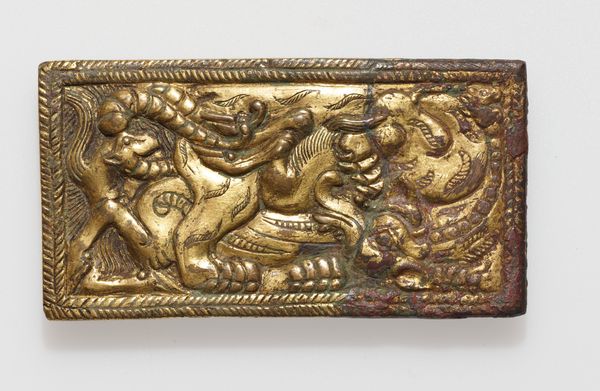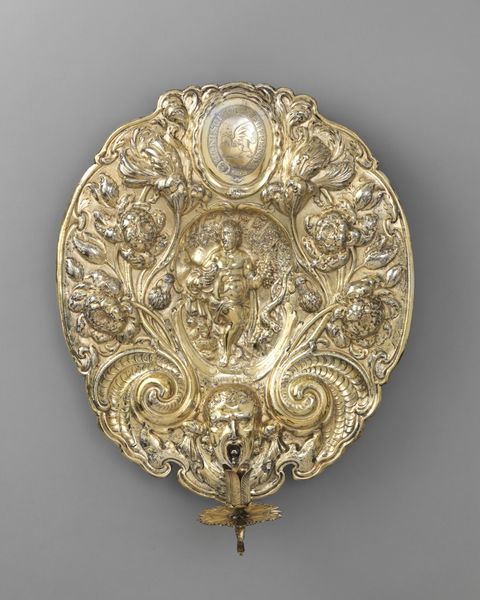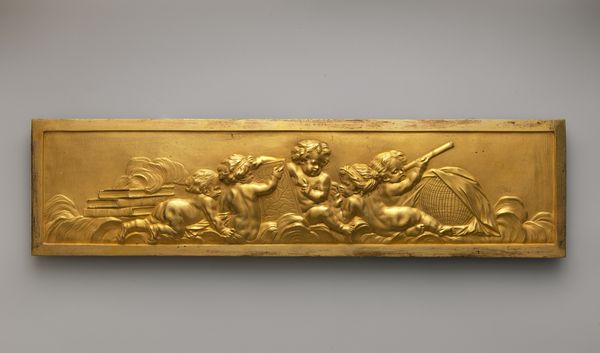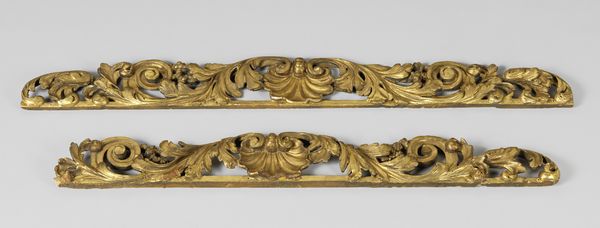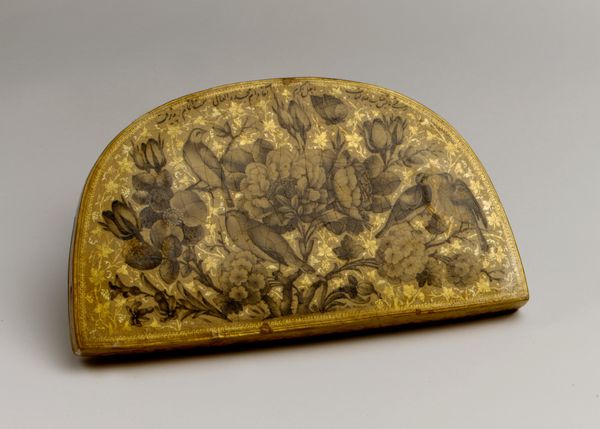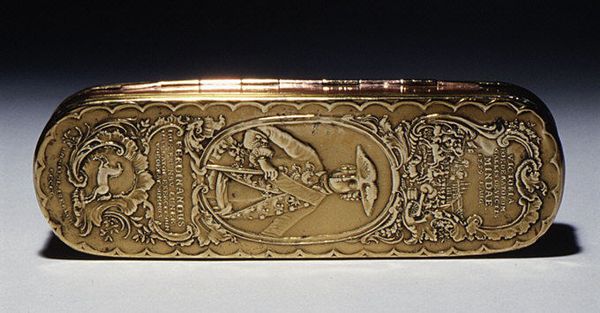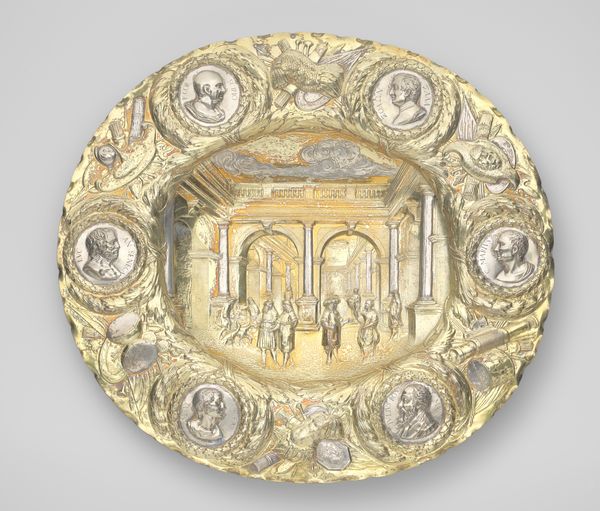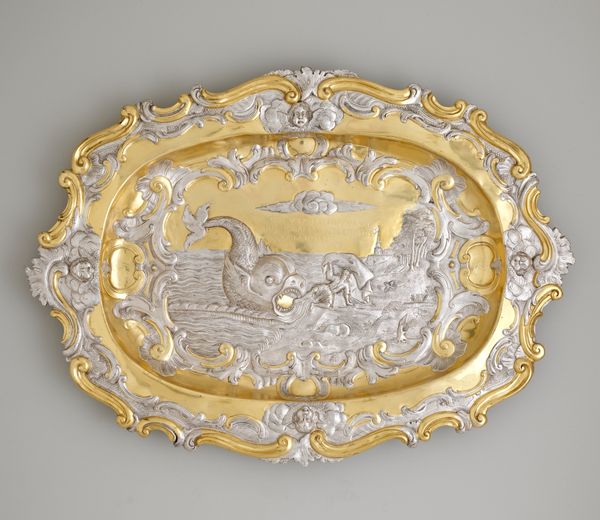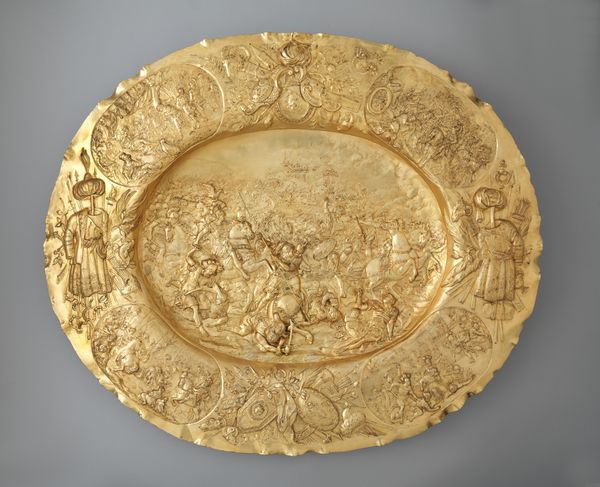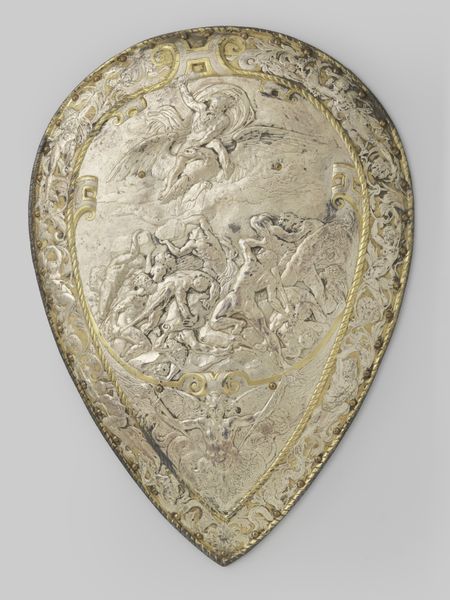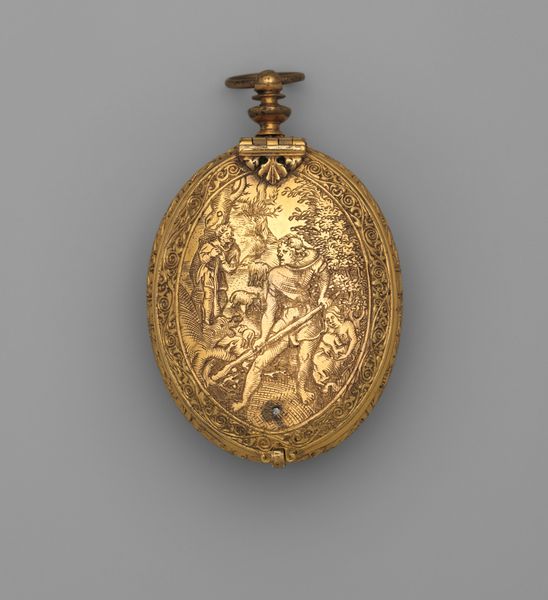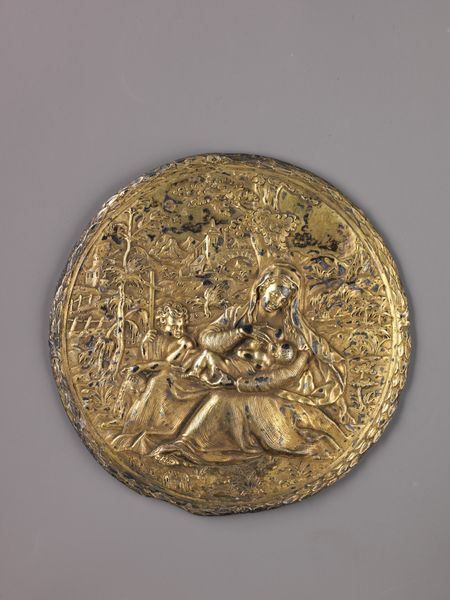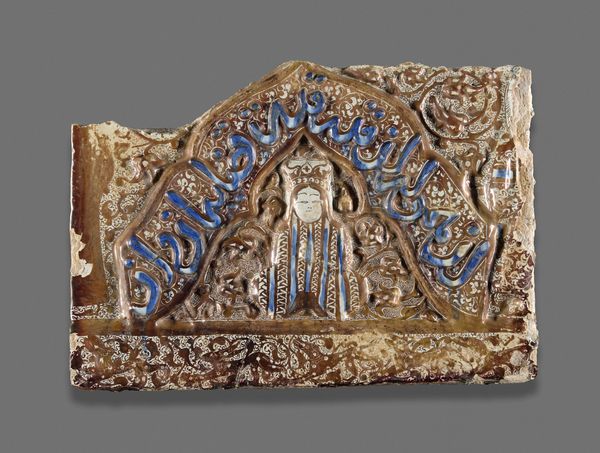
metal, gold, relief, sculpture
#
baroque
#
metal
#
sculpture
#
gold
#
relief
#
figuration
#
female-nude
#
sculpture
#
history-painting
#
decorative-art
#
nude
#
decorative art
#
male-nude
Dimensions: Overall: 9 5/8 × 5 1/2 in. (24.4 × 14 cm)
Copyright: Public Domain
Editor: Here we have Guglielmo della Porta's "Banquet of the Gods," created sometime between 1585 and 1699. It's a gold and metal relief sculpture, currently held at the Metropolitan Museum of Art. The figures are densely packed, giving it an almost chaotic, dynamic feel. How do you interpret this work, particularly in its historical context? Curator: The “Banquet of the Gods” is not merely decorative; it’s a statement. Consider the era, a time of intense religious and political upheaval. These depictions of nude gods and goddesses dining lavishly become, potentially, a subtle rebellion against the prevailing norms and the rise of the counter-reformation. How might this gilded opulence function as a form of cultural resistance? Editor: That's fascinating. It's easy to overlook the potential for social commentary within what appears to be just a mythological scene. Is it then, perhaps, a commentary on power and excess? Curator: Absolutely. The classical myths were often used to discuss contemporary issues. By portraying this banquet, della Porta may be critiquing the excesses of the elite. Who is invited to the table, and who is excluded? Moreover, how are these power dynamics mirrored in society? Are these all-male portrayals excluding women? Editor: So, beyond the surface beauty, it invites us to consider the social hierarchies of the time, maybe questioning them. It’s a call to analyze who holds power, who is glorified, and at what cost. Curator: Precisely. And the work prompts us to contemplate the relationship between art, power, and social commentary, highlighting how artistic expression can subtly challenge the dominant ideology. We've learned to look deeper than just aesthetics! Editor: Definitely. I now see the "Banquet of the Gods" not just as a depiction of mythology, but a historical mirror reflecting complex socio-political dynamics, and as a potential challenge to gender roles in that time.
Comments
No comments
Be the first to comment and join the conversation on the ultimate creative platform.
